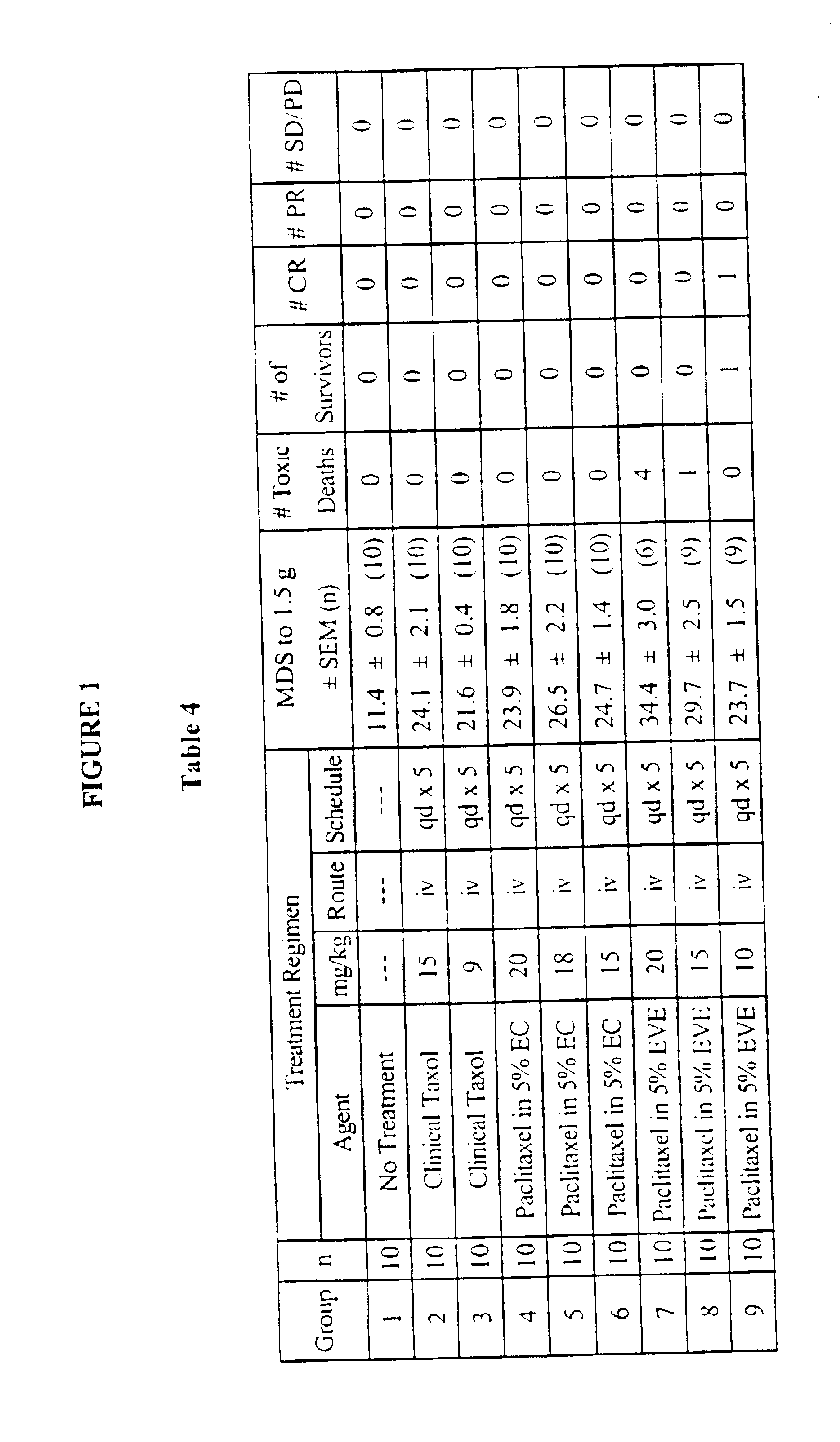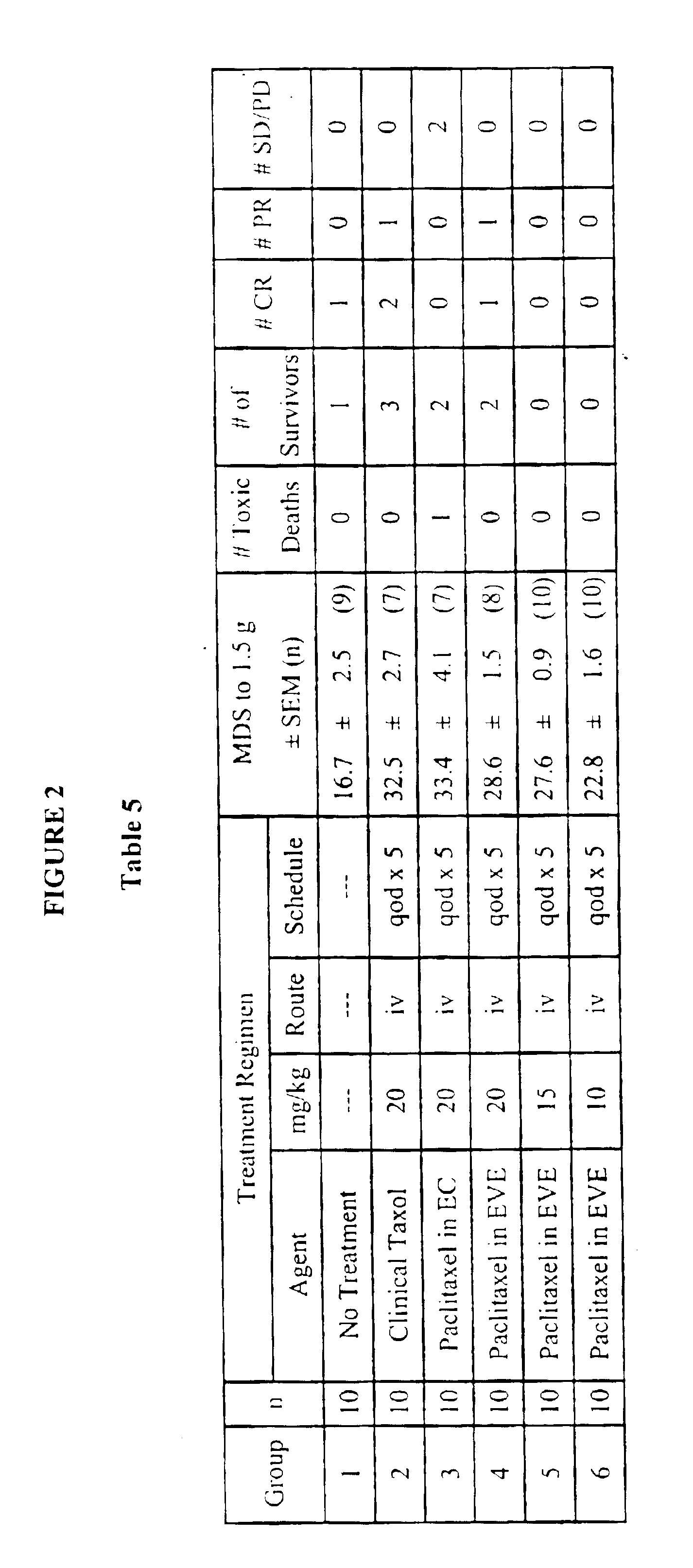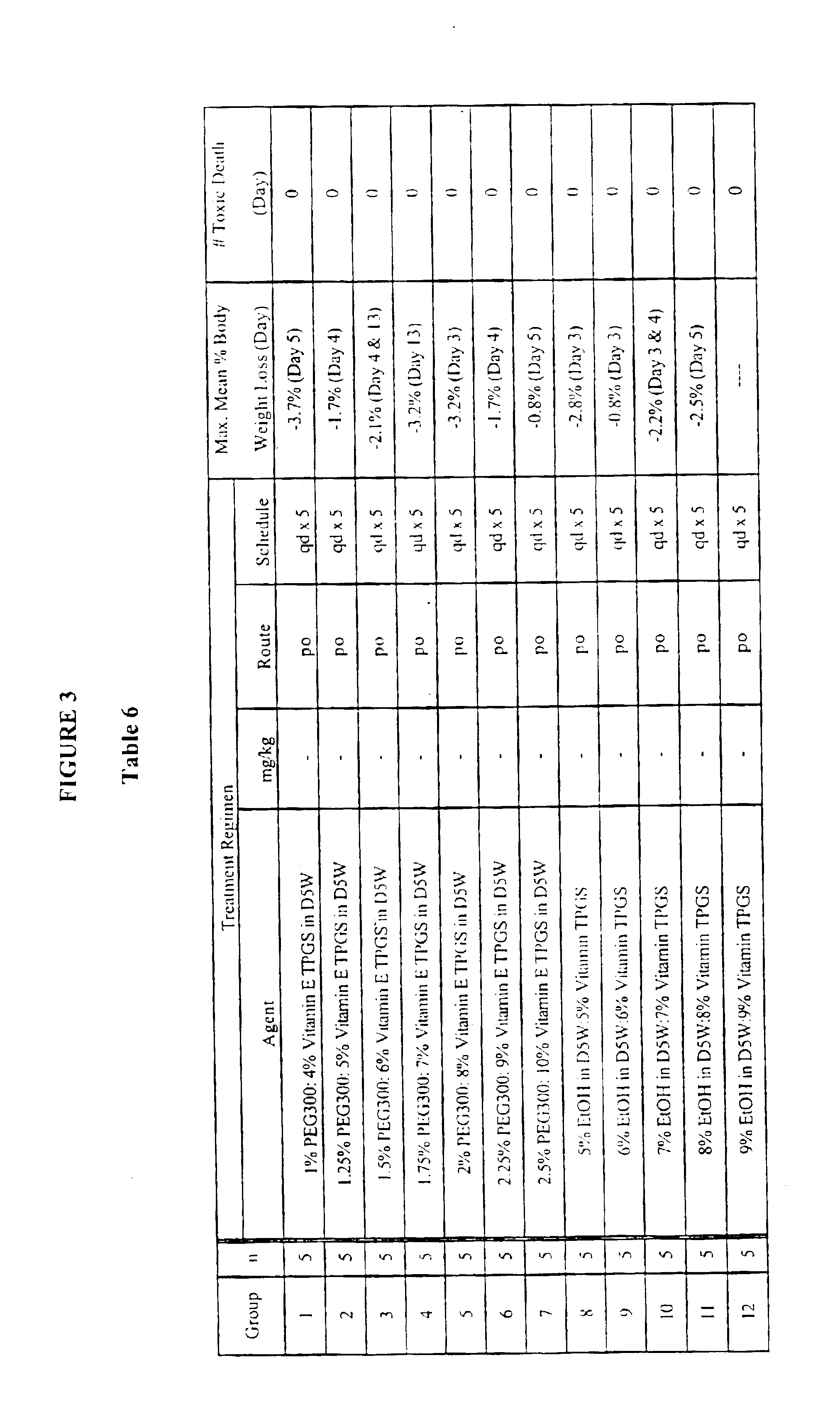Methods for administration of paclitaxel
a technology of paclitaxel and paclitaxel sulfate, which is applied in the direction of applications, biocide, heterocyclic compound active ingredients, etc., can solve the problems of drug precipitation, low paclitaxel soluble in water, and unexpectedly high incidence of serious hypersensitivity reactions
- Summary
- Abstract
- Description
- Claims
- Application Information
AI Technical Summary
Benefits of technology
Problems solved by technology
Method used
Image
Examples
example 1
Paclitaxel (10 mg) was dissolved in ethanol. Vitamin E TPGS (VTPGS, 700 mg, Eastman Chemical Company) was melted at 50.degree. C. and dissolved separately in ethanol in a ratio of 3:1, respectively. The paclitaxel and VTPGS solutions were mixed and ethanol was added to the solution to a final amount of 300 mg, resulting in a 7:3 weight ratio of VTPGS to ethanol. Anhydrous ascorbic acid (5 mg) was then added to the mixture. The resultant stock solution (08-A) appears clear and yellow in color. The total volume of the stock solution was 25 mL.
Aliquots of the stock solution (08-A) was transferred into vials at 5 mL / vial, and incubated at 4.degree. C., 25.degree. C., 40.degree. C. and 50.degree. C. respectively for periods of time as listed in Tables 1A, 1B, 1C and 1D. Samples were taken at one week or predetermined intervals and tested for chemical stability. The stability testing was performed using an HPLC method. A LC-F (penta-fluorophenyl bonded phase) 5 .mu.m, 100 .ANG. pore size,...
example 2
Paclitaxel (10 mg) was dissolved in ethanol. Vitamin E TPGS (VTPGS, 600 mg) was melted at 50.degree. C. and dissolved separately in ethanol in a ratio of 3:1, respectively. The paclitaxel and VTPGS solutions were mixed and ethanol was added to the solution to a final amount of 400 mg, resulting in a 6:4 weight ratio of VTPGS to ethanol. Anhydrous ascorbic acid (5 mg) was then added to the mixture. The resultant stock solution (08-B) appears clear and yellow in color. The total volume of the stock solution was 25 mL.
Aliquots of the stock solution (08-B) was transferred into vials at 5 mL / vial, and incubated at 4.degree. C., 25.degree. C., 40.degree. C. and 50.degree. C. respectively for periods of time as listed in Tables 1A, 1B, 1C and 1D. Samples were taken at one week or predetermined intervals and tested for chemical stability of paclitaxel. The stability testing was performed using the method outlined in Example 1. The results are shown in Tables 1A, 1B, 1C and 1D.
One milliliter...
example 3
Paclitaxel (10 mg) was dissolved in ethanol. Vitamin E TPGS (VTPGS, 500 mg) was melted at 50.degree. C. and dissolved separately in ethanol in a ratio of 3:1, respectively. The paclitaxel and VTPGS solutions were mixed and ethanol was added to the solution to a final amount of 500 mg, resulting in a 5:5 weight ratio of VTPGS to ethanol. Anhydrous ascorbic acid (5 mg) was then added to the mixture. The resultant stock solution (08-C) appears clear and yellow in color. The total volume of the stock solution was 25 mL.
Aliquots of the stock solution (08-C) was transferred into vials at 5 mL / vial, and incubated at 4.degree. C., 25.degree. C., 40.degree. C. and 50.degree. C. respectively for periods of time as listed in Tables 1A, 1B, 1C and 1D. Samples were taken at one week intervals and tested for chemical stability of paclitaxel. The stability testing was performed using the method outlined in Example 1. The results are shown in Tables 1A, 1B, 1C and 1D.
One milliliter of the stock sol...
PUM
| Property | Measurement | Unit |
|---|---|---|
| pKa | aaaaa | aaaaa |
| pKa | aaaaa | aaaaa |
| pKa | aaaaa | aaaaa |
Abstract
Description
Claims
Application Information
 Login to View More
Login to View More - R&D
- Intellectual Property
- Life Sciences
- Materials
- Tech Scout
- Unparalleled Data Quality
- Higher Quality Content
- 60% Fewer Hallucinations
Browse by: Latest US Patents, China's latest patents, Technical Efficacy Thesaurus, Application Domain, Technology Topic, Popular Technical Reports.
© 2025 PatSnap. All rights reserved.Legal|Privacy policy|Modern Slavery Act Transparency Statement|Sitemap|About US| Contact US: help@patsnap.com



